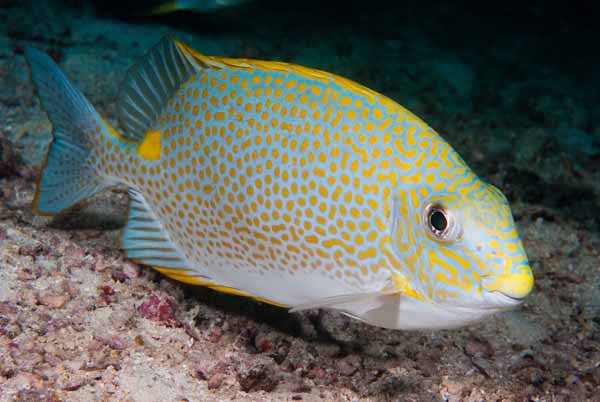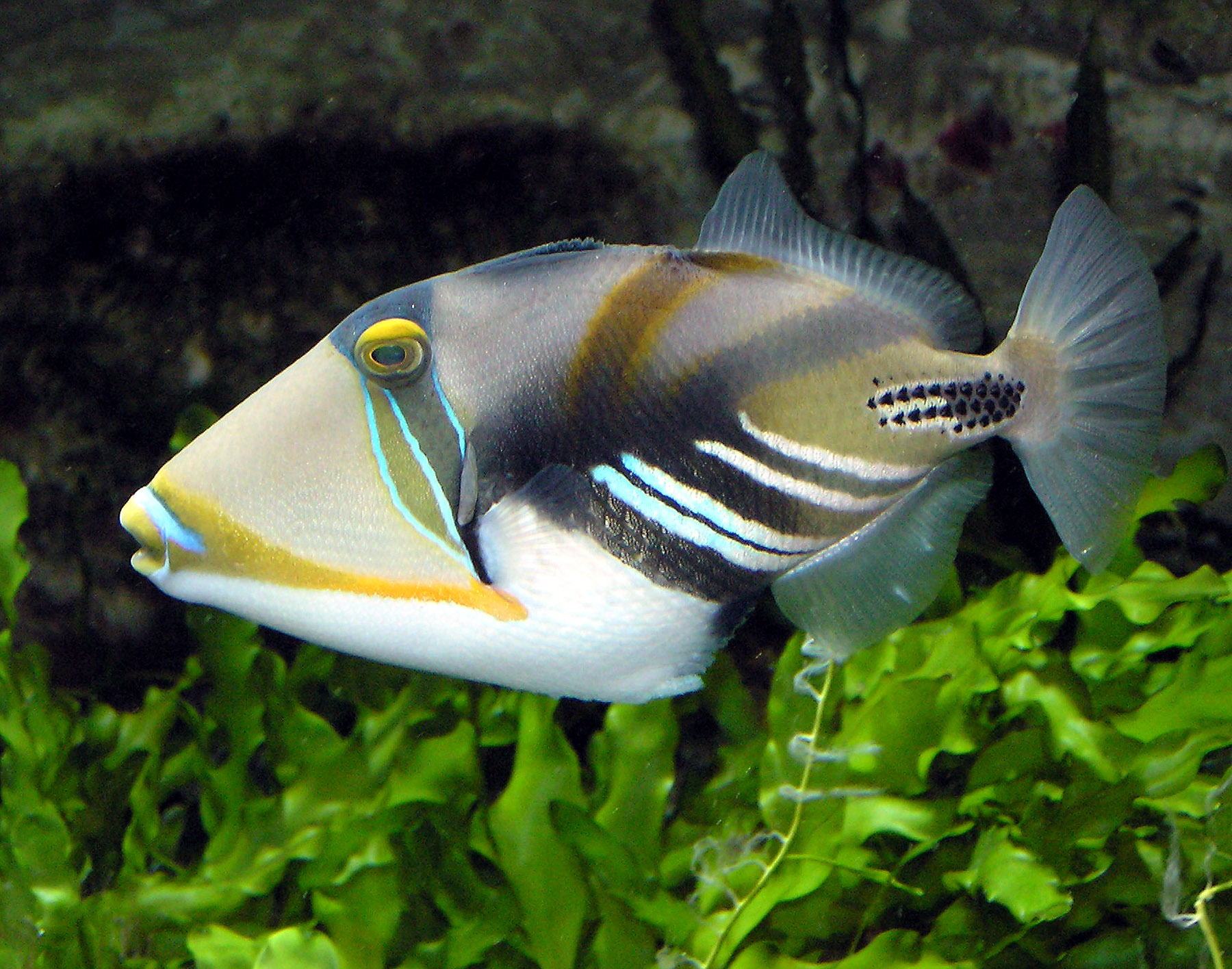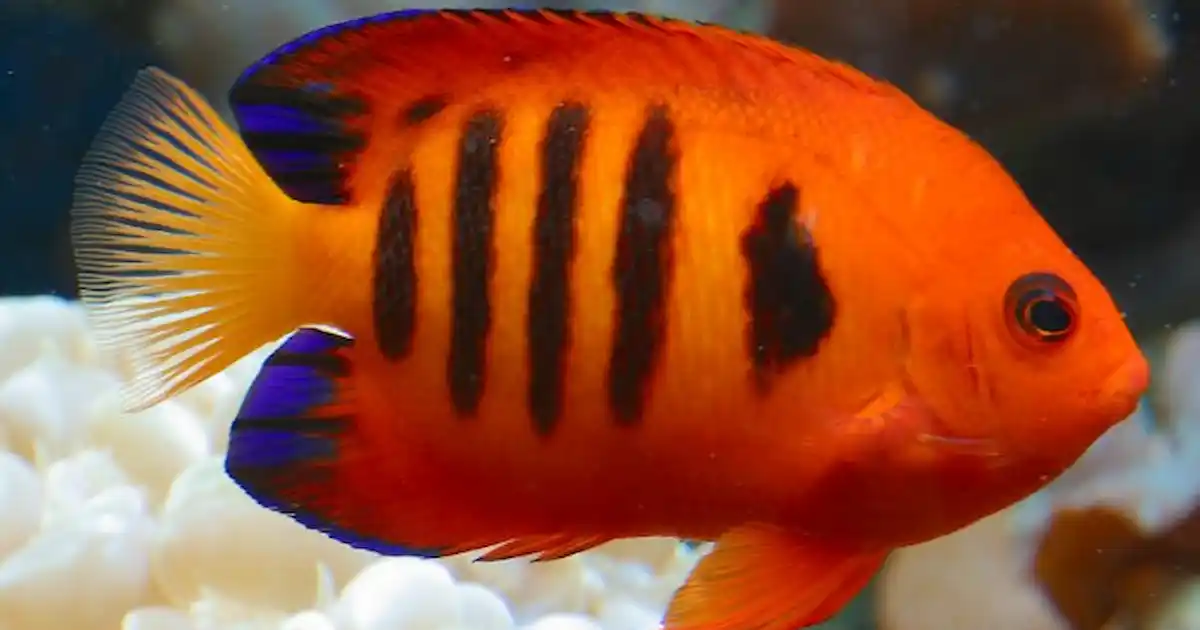

Heads up: Our content is reader-supported. This page includes affiliate links. If you click and purchase, I may receive a small commission at no extra cost to you.
**This post contains affiliate links. If you use these links to buy something we may earn a commission.** Thanks
SaltwaterFish has a consumer rating of 2.91 stars from 59 reviews indicating that most customers are generally dissatisfied with their purchases. Consumers complaining about SaltwaterFish most frequently mention store credit, customer service and live aquaria problems.SaltwaterFish ranks 6th among Aquariums sites.
Best Fish To Buy Online At SaltWaterFish
Contents
- 1 Angelfish Dwarf
- 2 Angelfish Large
- 3 Anthias
- 4 Basslets
- 5 Batfish
- 6 Blennies
- 7 Butterflies
- 8 Cardinals
- 9 Clownfish
- 10 Damsels
- 11 Dottybacks
- 12 Eels
- 13 Frogfish
- 14 Goatfish
- 15 Gobies
- 16 Groupers
- 17 Hamlets
- 18 Hawkfish
- 19 Hogfish
- 20 Lionfish
- 21 Live Foods
- 22 Miscellaneous – Unique Marine Life
- 23 Puffers
- 24 Rabbitfish
- 25 Seahorses
- 26 Squirrelfish
- 27 Sweetlips
- 28 Tangs
- 29 Triggers
- 30 Wrasses
- 31 Wrasses – Reef Safe
Angelfish Dwarf
Dwarf Angelfish are generally bold in nature. For that reason, they shouldn’t be kept together unless they are in male and female pairs. Dwarf Angelfish dominate their environment and tend to stay front and center. They are very popular for their bright colors and ease of care. Dwarf Angelfish graze the reef looking for algae. Arguably the best feature is that most dwarf angelfish stay relatively small which allows a wide variety of suitable environments.
Angelfish Large

Large angelfish are incredible to see as they are such a centerpiece in their environment. They require a lot of room to swim and essentially demand the whole territory as their own. In general, large angelfish shouldn’t be kept with other angelfish due to their bold nature. They get along with most reef fish and in the right conditions, are easy to care for. Large angelfish graze the reef looking for algae, coral, and invertebrates, so they are not considered a reef safe fish.
Anthias

Anthias are a peaceful community fish. They are usually seen swimming in large groups amongst coral reefs and live rock. Anthias are not shy in nature and are easily one of the most sought after fish due to their very visible presence. Groups of Anthias are generally comprised of one male and multiple females. Anthias are full of energy and require a diet high in protein such as Mysis Shrimp or other meaty seafoods. Due to their excess of energy, they need to eat a few times daily.
Basslets

Basslets are small colorful fish that add entertainment and activity to any environment. They are a great community fish that will thrive in both coral reefs and rock reefs. Basslets are popular among all hobbyists from beginner to advanced, due to their passive behavior and ease of care. The Basslet is a reef safe fish with a variable diet, accepting most foods offered. Not shy, they spend most of their time out in the open water.
Batfish
Batfish are without a doubt, strikingly unique. With their graceful countenance as they glide effortlessly across your tank, they stir up entertainment effortlessly. Batfish are known to be a friendly and peaceful community fish but are not suitable for reef environments or kept with small invertebrates. Also known as spadefish, Batfish are noted for their long dorsal and anal fins which gives them their unique shape. They will need a varied diet of meaty seafoods offered a couple times daily.
Blennies

Blennies are a calm, friendly, community fish. They are highly captivating and sought after, as they have a truly unique bubbly personality unlike any other type of marine fish. Blennies will maintain a small territory in which they find a small place in the live rock to sleep and hide. They do not do well with other Blennies unless they have a very large environment with places to roam and hide. They accept a varied diet and prefer a few small meals a day.
Butterflies

Butterflyfish are great community fish that are seen in groups of the same kind or living among other fish and Butterflyfish alike. Most have a similar look to Angelfish, but have a unique characteristic all their own. Vibrantly colored, with an extended snout to find food and nip at pests, invertebrates and coral polyps among the reefs, butterflyfish, are curious fish that enjoy a variety of environments. They should be fed a varied diet of meaty seafood and algae.
Cardinals

Cardinals are popular as they are easy to care for and stay relatively small. They do well in a coral reef or rock reef environment. Cardinals are commonly seen in large groups which protects them as they give the illusion of one big fish. They are very docile and friendly, making them a great community fish. Cardinals will eat most prepared foods as well as meaty seafoods. They are easily a favorite as they dominate the top waters and tend to stay out in the open.
Clownfish

Clownfish are easily the most recognized fish anywhere. They are brightly colored, easy to care for, and friendly by nature. They are quite possibly the most popular fish with their comical Clownfish dance, wiggling to and fro. Huge advances in science have allowed for aquacultured Clownfish with many variations and mutations. These fish will easily adapt to most environments and will eat any kind of meaty seafood, flake or pellet.
Damsels

Damsels are commonly found in most environments from coral reefs to rock reefs. They are bold yet compatible with most other fish. Damsels can be kept in groups of the same or as an individual. They tend to swim freely out in the open making them visible most of the time which is desirable when many other fish are quite shy. Damsels will eat any meaty seafood, pellet or flakes. These fish are very popular as they tend to be very easy to care for.
Dottybacks

Dottybacks are strikingly unique, with bright popping color making them easy to identify. They have a bold presence in a coral or rock reef environment, and are not shy. Using their elongated body, they fit in and between the live rock with ease. Dottybacks do not get along with other Dottybacks unless they are a male and female pair. They are a high energy fish and should be offered a few meals a day consisting of meaty seafoods, flakes, and pellets.
Eels

Eels are incredibly majestic and thrive in most conditions. They are most commonly seen in areas with an abundance of live rock. With their snake like shape, Eels can maneuver in and out of rock holes, caves, and caverns with quick reflexes. They eat small fish and invertebrates, so it is best to surround them with larger more compatible fish. Eels do not eat coral, so they are certainly an option for coral reefs. The main things to consider are that some Eels can grow very large, and all Eels will require a tight fitting lid for their environment.
Frogfish

Frogfish are often forgotten because they are perfectly camouflaged whether on the sand bed or tucked within the coral reef, waiting patiently for their next meal. They are ambush predators and they will eat just about anything passing by. Depending on the species and environment, Frogfish can be intensely colored (living on a coral reef) or very blandly colored (living on a rock reef or sand bed). Frogfish are compatible with most other same size or larger fish.
Goatfish

Goatfish are unique bottom feeders. Goatfish have long feelers also known as barbels, at the base of their mouths which they use to spend their time rummaging through crushed coral or sand for anything edible. Goatfish are often seen successfully hunting in groups, while other fish are on standby for the the opportunity to scavenge anything left behind. These bottom dwelling fish will require a meaty seafood diet as well as flake food and pellets.
Gobies

Gobies are a common community fish that will often times command their territory. There are many different kinds of Gobies that swim at the top waters or down in the sand bed. Gobies can be kept together as long as they are different kinds or bonded pairs. Some of these particular fish have a symbiotic relationship with Pistol Shrimp. Gobies are easy to care for and stay relatively small. They are not shy and will grab your full attention with their playful demeanor.
Groupers

Groupers are widely known for their bold presence. They are masters of the marine world and are incredibly in their versatility to adapt to almost any conditions. Groupers are best suited for a large environment as they grow quickly and require same sized fish around or they could easily become a tasty snack. Groupers are easy to identify with their hinged jaw allowing them to essentially gulp their meal in one quick movement. They should be offered meaty seafood daily.
Hamlets

Hamlets are traditionally found in the warm waters of the Gulf of Mexico and the Caribbean. They vary in color and pattern but are generally brightly colored and very visible. Hamlets have a large mouth and are carnivorous, so they are not considered invertebrate safe. They will consume small fish if they are not well fed. Hamlets require a large environment and will thrive in most conditions. Hamlets can be semi-aggressive but get along well with similar sized fish.
Hawkfish

Hawkfish are quite entertaining. They perch on rocks and coral reefs peering out looking for any nearby food. When they spot something they want, they will dart out, eat, and return to their perching spot. Hawkfish are peaceful community fish suitable for most environments. They are best kept without other Hawkfish. Their main diet is meaty seafoods, flakes, and pellets. Be aware that Hawkfish may eat any small shrimp they have access to.
Hogfish

Hogfish are a member of the wrasse family. They are peaceful fish that can be found near coral reefs and rock reefs. They are not reef safe, however as they pick at corals and invertebrates constantly. The most suitable environment for the Hogfish would be one with an abundance of live rock, and open water. Similar sized fish would be the best choice for safe keeping. Hogfish will eat most prepared foods such as meaty seafoods, pellets, and flake foods.
Lionfish

Stunning, amazing, gorgeous…and venomous, Lionfish are heralded for their beauty and grace. With long flowing dorsal fins, lionfish are unique in every way. These predatory fish will stalk their prey, then using their mesmerizing fins to distract their meal, they will take a single gulp and eat anything over half their own size! The signature dorsal fins are well known to hold venom that protects the Lionfish from its own predators. The Lionfish should be offered small meals of meaty seafood.
Live Foods

Fish, coral, and invertebrates, need live foods to maintain a long healthy life. Live foods are beneficial as they are generally high in protein and offer minerals and nutrients that flake foods or pellet foods do not have. Marine animals prefer a varied diet, so it is best to offer a selection of live foods.
Miscellaneous – Unique Marine Life
Find an amazing selection of unique marine life at SaltWaterFish.com. From parrotfish to flounder, SaltWaterFish.com has the unique additions to make your tank truly special.
Puffers

Puffers are a remarkably unique fish. True to their name, Puffers have the ability to puff themselves up to be nearly twice their resting size, sometimes as a stress response or as a fully functional defense tactic. Potential predators do not attempt to swallow a puffed Puffer as it would prove fatal. Puffers have large teeth, so they spend most of their time grazing the reef eating coral polyps and invertebrates. For this reason, they aren’t reef safe. Puffers will eat a varied diet of meaty seafoods, pellets and flake foods.
Rabbitfish

Rabbitfish, sometimes known as spinefoots or foxface, are easily spotted due to their pronounced venomous dorsal spikes and signature face stripe. They are community fish that do well with their same species or just about any other fish common to rock reefs and coral reefs. The venomous doral spike is used for protection as the they bold the open waters and search for meaty seafoods and algae. Rabbitfish are easy to care for and will do well in any environment.
Seahorses

Seahorses and Pipefish are amazing creatures that exude elegance. Seahorses are best suited for a very slow moving environment with plenty of plants, gorgonians, or other things to allow them to hold on while awaiting their next meal. Moving very slowly with a flexible tail and hovering steady with small fins, the Seahorse will search for small shrimp and invertebrates floating in the water column. These incredible animals prefer the company of other Seahorses, so you can see them thrive in small groups.
Squirrelfish

Squirrelfish are nocturnal fish that remains alert when the rest of the reef is fast asleep. The pronounced eye belies their nocturnal ways. While the Squirrelfish, with its large eyes and reds, silver colors predominating, may look defenseless, it has venomous preopercle spines (near the gills). These fish are often seen in groups and hide under rock ledges and inside caves and caverns during the day. They eat meaty seafoods, flakes, and pellets. Squirrelfish are compatible with most fish, however, they will readily consume small shrimps or crabs.
Sweetlips

Sweetlips are peaceful community fish that thrive in small groups. Usually spotted, with a slow, easy swimming pattern, Sweetlips congregate in the rocky shoals, within and around coral reefs. They are compatible with other fish similar in size. Sweetlips require a large swimming space and prefer a large environment. They are carnivorous fish, so meaty seafoods should be readily available. They will also eat pellet or flake foods. Sweetlips are somewhat difficult to care for and should have the proper surroundings to prevent stress.
Tangs

Tangs are notably one of the most desired species of fish due to their bold presence, active demeanor, and their need to always be front and center. There are many varieties of Tangs and they can be kept together with respect to the size of their environment. They are a peaceful community fish and will thrive in most conditions including a coral reef system or a live rock only system. Tangs are omnivores and constantly pick at algae and just about any other prepared foods such as meaty seafoods, flakes and pellets.
Triggers

Triggers are easy to identify by their unique oval shape, elongated snout, and often visible teeth. Triggers are carnivores and spend most of their time grazing coral reefs or picking at invertebrates within the live rock. Their elongated snout allows them to get to foods that are not easily reached by other fish. Triggers require a meaty seafood diet and plenty of space to swim. They are not reef safe and shouldn’t be kept with small fish or invertebrates.
Wrasses

Wrasses are vibrantly colored and have a very playful disposition which makes them highly sought after as a centerpiece fish. They will adapt to most conditions and can be found on coral reefs or rock reefs. While they tend to be passive and friendly, wrasses will hide under the sand bed for protection if they are stressed or frightened. Wrasses have a varied diet of meaty seafood, flakes and pellets. These wrasses are not reef safe.
Wrasses – Reef Safe

Wrasses are vibrantly colored and have a very playful disposition which makes them highly sought after as a centerpiece fish. They will adapt to most conditions and can be found on coral reefs or rock reefs. While they tend to be passive and friendly, wrasses will hide under the sand bed for protection if they are stressed or frightened. Wrasses have a varied diet of meaty seafood, flakes and pellets. These wrasses are reef safe.







